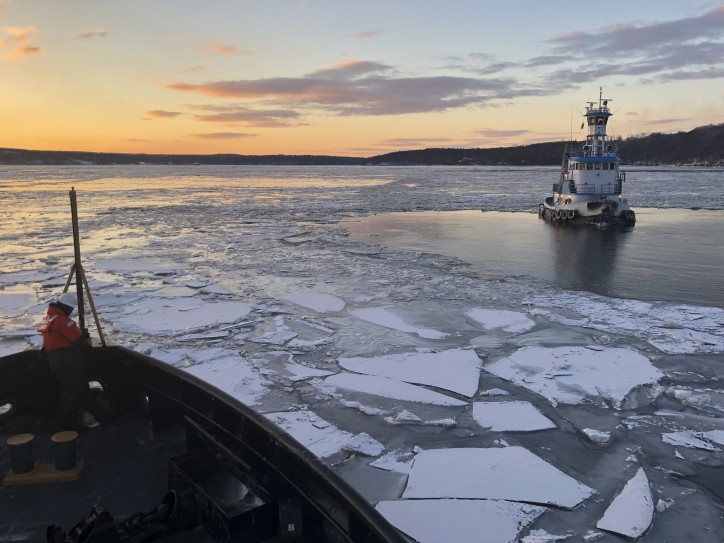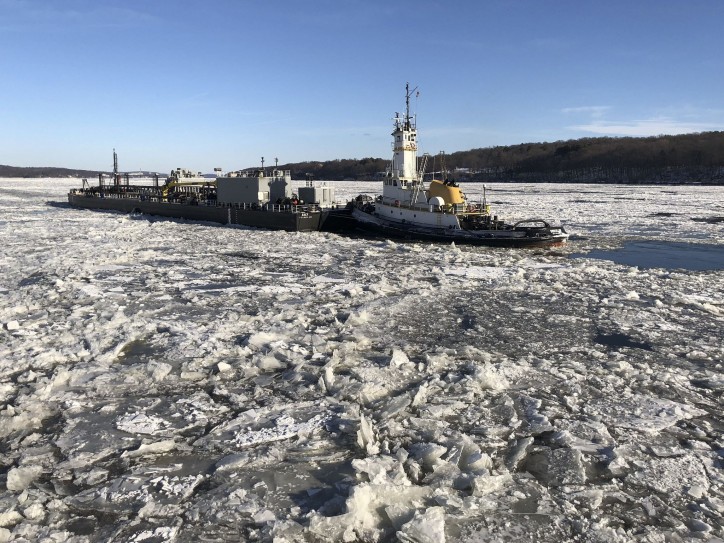The U.S. Coast Guard assisted two vessels beset by ice in the Hudson River, Tuesday morning.
Watchstanders at the Coast Guard Sector New York command center were notified Sunday that a commercial tug, the Brooklyn, had become beset in ice, and a second tug, the Stephanie Dann, became hampered by ice Monday.

Coast Guard Cutter Penobscot Bay, a 140-foot ice-breaking tug, arrived on scene Sunday evening to help free the Brooklyn near Saugerties, New York. The Brooklyn became stuck after becoming disabled en route to Albany. After the tug was freed, Coast Guard Cutter Hawser, a 65-foot harbor tug, escorted the Brooklyn to their destination.
The Penobscot Bay also assisted with the tug Stephanie Dann near Kingston, New York, Tuesday morning. After the tug had been beset by ice for a full night, the icebreaker was able to clear an area for the tug to continue their transit.

Coast Guard ice-breaking tugs from Bayonne, New Jersey, and Saugerties, New York, are positioned along the river and are assisting vessels transiting areas where thick ice is present.
Currently, another 140-foot ice-breaking tug, Coast Guard Cutter Sturgeon Bay, is being utilized further south in the Hudson River to ensure commercial traffic can successfully and safely sail to their destinations.
The ice breaking is part of the Coast Guard’s region-wide effort know as Operation Reliable Energy for Northeast Winters or Operation RENEW. The Coast Guard’s strategy will ensure Northeast communities have the security, supplies, energy, and emergency resources they need throughout the winter.
Source: USCG